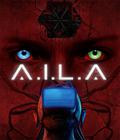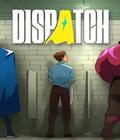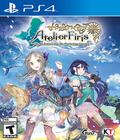Buy Atelier Firis: The Alchemist and the Mysterious Journey
The last Atelier game, Atelier Sophie, began a new trilogy. It was more simplified and more basic than any game since Atelier Rorona. It was still enjoyable but felt like a step back. Perhaps that is why Atelier Firis: The Alchemist and the Mysterious Journey is an ambitious attempt to do more with the franchise. This is good to some degree, as it allows for new ideas and concepts, but ambition isn't always success, and in some ways, Firis is the victim of its own aspirations.
Atelier Firis opens in a small underground city that's sealed from the outside world except for a single doorway that's only opened to allow hunters and traders in and out. In this small city lives a girl named Firis, whose natural gift for finding ore is matched by her desire to see the outside world. Her life changes when an alchemist named Sophie shows up and blows the door wide open. Sophie's alchemy draws Firis' admiration, and before long, she is her student. Firis' village offers her a chance: If, within one year, she can complete the exam to be recognized as a licensed alchemist, then she can leave the village. Otherwise, she must return. Firis sets out on her journey.
Unlike most recent Atelier games, Firis doesn't have a central hub since you're on a journey. Instead, you're exploring the world map and can step up your atelier to craft any campfire in the world. You're still given a guided path and a focused world, but it's closer to open-world gameplay than anything else in the franchise. It has some of the largest and most wide-open areas and, perhaps more critically, a lot less focus. You come into an area, and you're asked to explore it and find your way forward. The game has quest markers but not for every objective, and sometimes, you're just asked to explore. It's a far more unrestricted game than even Atelier Shallie, despite the time limit imposed during the start of the game.
Freedom is the name of the game when it comes to completing objectives. Your goal is to pass your alchemist's exam within a year and earn the recommendation of three alchemists along the way. As long as you're doing that, you can do generally whatever you want, and the game rewards you for it. A big part of this is the Idea system. Similar to Atelier Sophie, you learn alchemy recipes by completing tasks. You're given hints about what can unlock those recipes, and you can pick what you want to focus on. You can also complete side-quests to unlock Idea Points, which are used to circumvent the requirements for learning a recipe. Complex recipes require more Idea Points, so it's often wise to try before you buy.
You're somewhat limited in your freedom by your LP, which are Life Points and a legacy Atelier mechanic. Effectively, it is how much energy you have. Taking actions reduces LP, while resting or crafting restores it. The lower it gets, the less effective Sophie is at fighting and gathering. If it reaches zero, you're given a chance to rest or you'll collapse. Fortunately, you can craft equippable items that can reduce the wear and tear on your LP. A pickax makes it easier to break rocks, and a mining bomb can shatter boulders. Mostly, it's there to encourage you to take a break and do some crafting.
Crafting in Atelier Firis follows the basic idea introduced in Atelier Sophie but adds complexity. Like Sophie, the game is built around a Tetris-like board of alchemical ingredients, with every item having its own shape, size and color. Unlike Sophie, you don't constantly swap out cauldrons, but instead, you have catalysts that change the board attributes. Catalysts are consumable items and change depending on the recipe, so you can't choose one and rely on it.
Although crafting is more complex, it's still fun. As always, the heart and soul of an Atelier game is in how it lets you build and craft complex items, and in that respect, Firis is one of the top titles. It combines the engaging system found in Sophie with items that require more care and thought. It's ridiculously engaging to create the perfect combination of ingredients, catalyst and positioning to make a high-powered item. There's also a new Mass Synthesis system that's largely used for plot reasons and lets you craft super-sized items. It's a fun challenge, especially when you're asked to make high-quality items.
Firis has a fun cast that suffers from being non-linear and largely optional. Since it is possible to recruit characters late or never, a lot of them remain on the outskirts and don't contribute to cut scenes. It isn't a critical problem, and some of the cast is pretty fun, but it would've probably been better to have them join up instead of being casual friends. The game does a good job of balancing a wide cast despite the similarity between many of them. There are no fewer than four different ditzy, good-natured alchemist girls, but they're rather distinctive even if they're alike. It's not as strong a cast as any of the Dusk games, but it's still enjoyable.
Combat is still a part of the Atelier franchise. While Firis is similar to Sophie but more aggressive, its combat hasn't reached the highs of the Dusk trilogy. It's a turn-based combat system where players and enemies move along a timeline and act when their turn arrives. You can have up to four people in battle at once, and there's a light formation system where the positioning increases the enemy's likelihood of attacking a specific character.
The big gimmick with Firis is the Chain Burst system. Fighting enemies builds up your Chain gauge, and the gauge can be spent to protect her from damage by having an ally take a hit for her. If you let it build up, you'll enter Chain Burst mode. In Burst mode, several characters can combo their attacks together, and the damage of each attack massively increases. Characters can also learn special super moves, which are performed at the end of a chain. It's neat since it encourages you to consider your character's timing. Working to get consecutive moves by speeding up allies or slowing down enemies is critical for doing the most damage possible.
At times, Firis can feel overcrowded. There are so many systems, mechanics, and things to keep track of. The time limit is generous and eventually goes away, but it only adds to the sensation that this is a very busy game. The last batch of Atelier games only had pressure in the legacy mechanics. This is the first title in a while where I felt pushed to consider my choices. The game feels like it has so many ideas that some are left on the wayside. There are lots of mechanics that feel underbaked, such as the ability to customize your Atelier with new items, which are less interesting than they should.
A major problem with Firis is that its genuine sense of freedom can also work against it. Sometimes, it's annoying to figure out what you have to do next. The maps are large to the point of feeling overly so. An early quest had me looking for a pasture, but it wasn't pointed out where it was located, except "near town" and as a plain green field that looks a lot like the rest of the environment. I found it without too much trouble, but it highlights Atelier Firis' big problem. It wants to give you tons to explore but stick to the plain environments common to the franchise, and it doesn't hit either well enough.
It doesn't help that Atelier Firis isn't very impressive to look at. The visuals haven't changed in about half a decade of Atelier games, and it stands out more with Firis because it's more ambitious. Large, open vistas feel more like busywork. The character models and animations are quite nice, but there are some noticeable frame rate problems, even on a PS4. The soundtrack is nice and remains up to the franchise's high standard. The English voice acting is solid enough, and Japanese voice acting is available for those who prefer it.
The Atelier franchise has always had lackluster translations, but Atelier Firis feels like a low-end one. It doesn't the noteworthy translation errors of Escha & Logy, but characters speak in ways that only make sense for a dry and literal translation from the original Japanese, and it can sound awkward. It isn't enough to sour the game, but it stands out a fair bit, especially when playing with the Japanese voice track and seeing the extra energy in the original script.
Atelier Firis: The Alchemist and the Mysterious Journey is a solid and enjoyable JRPG that feels a bit too ambitious for its own good. The mechanics can sometimes feel overly bloated and overcrowded, and the graphics don't live up to the concepts. At its core, the alchemy is among some of the most fun in the franchise. It doesn't live up to the highs of the Dusk series, but Atelier Firis is still an enjoyable entry in the long-running franchise, and it's a very solid improvement on Sophie's strengths.
Score: 8.0/10
More articles about Atelier Firis: The Alchemist and the Mysterious Journey











 The 18th entry to GUST’s Atelier franchise takes place after the events of 2016’s Atelier Sophie: The Alchemist of the Mysterious Book, expanding on the series’ narrative.
The 18th entry to GUST’s Atelier franchise takes place after the events of 2016’s Atelier Sophie: The Alchemist of the Mysterious Book, expanding on the series’ narrative.













































